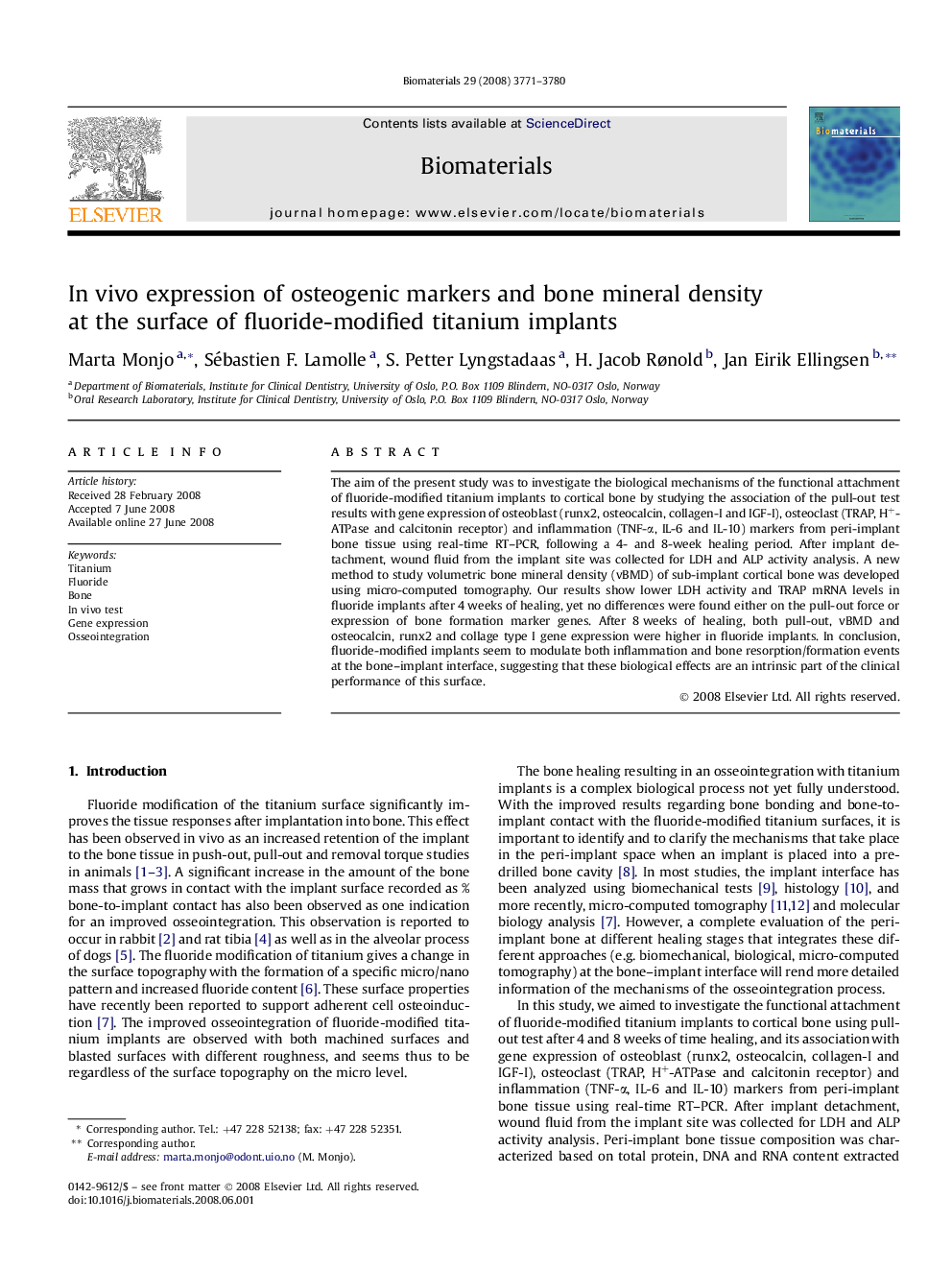| Article ID | Journal | Published Year | Pages | File Type |
|---|---|---|---|---|
| 9873 | Biomaterials | 2008 | 10 Pages |
The aim of the present study was to investigate the biological mechanisms of the functional attachment of fluoride-modified titanium implants to cortical bone by studying the association of the pull-out test results with gene expression of osteoblast (runx2, osteocalcin, collagen-I and IGF-I), osteoclast (TRAP, H+-ATPase and calcitonin receptor) and inflammation (TNF-α, IL-6 and IL-10) markers from peri-implant bone tissue using real-time RT–PCR, following a 4- and 8-week healing period. After implant detachment, wound fluid from the implant site was collected for LDH and ALP activity analysis. A new method to study volumetric bone mineral density (vBMD) of sub-implant cortical bone was developed using micro-computed tomography. Our results show lower LDH activity and TRAP mRNA levels in fluoride implants after 4 weeks of healing, yet no differences were found either on the pull-out force or expression of bone formation marker genes. After 8 weeks of healing, both pull-out, vBMD and osteocalcin, runx2 and collage type I gene expression were higher in fluoride implants. In conclusion, fluoride-modified implants seem to modulate both inflammation and bone resorption/formation events at the bone–implant interface, suggesting that these biological effects are an intrinsic part of the clinical performance of this surface.
